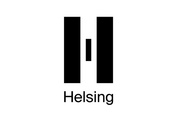Overview
Tickets to the Combat Air Power Conference have now sold out. However, we still tickets available to our other upcoming conference, the Integrated Air and Missile Defence Conference.
At the start of 2025 NATO nations face a serious and worsening defence outlook that makes rearmament an urgent necessity if deterrence is to be shored up and maintained. In Europe, Ukraine is struggling to hold back relentless Russian attacks on the ground and from the air. In the Indo-Pacific, the People’s Republic of China continues to increase the size, regularity and complexity of its military probing of Taiwanese airspace and maritime borders. The Middle East has seen devastating fighting between Israel, Hamas and Hezbollah, as well as more serious direct escalation than ever before between Israel and Iran itself, and the unexpected rapid collapse of the Assad regime in Syria. The return of Donald Trump to the White House is all but guaranteed to bring greater unpredictability and a more transactional nature to the relationships between the US and its allies. It is also almost certain to accelerate the already clear shift of US military capabilities from CENTCOM and EUCOM towards INDOPACOM to contain China.
In the face of a very uncertain outlook for Ukraine, and steadily increasing Russian Ground Forces size and combat experience despite great losses, air forces are ever more important to deterring wider aggression in Europe. To do this, NATO requires the ability to gain and exploit air superiority in airspace contested by Russian and potentially Chinese air defence systems as fast as possible. Non-US member states field large forces in aggregate, but all too often without the required weapon stocks, regular high-end training, enablers and logistical depth to translate those airframe numbers into real capability at scale. The growing Russian threat picture, aided by North Korea and Iran, means that time is of the essence. Airpower offers the key to ensuring deterrence in both Europe and also in the Indo-Pacific; but the war in Ukraine has exposed the limitations of forces without the stockpiles, training or logistics to sustain their peacetime force postures in conflict.
Conference focus
It is in this challenging context that this conference will explore the progress made and gaps remaining to fill to get NATO air forces ready for high-intensity conflict over the past three years. Key topics will include avenues for enhanced cooperation in both defence industrial and operational planning terms; how to increase the airborne electromagnetic warfare capabilities of the Alliance; and how to best harness varied modernisation and rearmament drivers in different NATO nations. To do so, the conference will bring together senior air force leaders from across the Alliance, alongside policymakers and experts from the industry and think tank sectors to share ideas on the best ways to cooperate in addressing the outstanding shortfalls as fast as possible.
As an independent voice, RUSI offers a neutral and critical space to have these vital discussions, and for other members of the air power community to engage openly from the audience.
Sessions
- In Conversation: The Global Threat Trajectory
- Expanding European Air Capability Cooperation
- Capability Growth and Remaining Gaps in Frontline Capabilities
- Harmonising Different Force Modernisation and Next-Generation Programmes
Joining Instructions
This is an in-person only conference taking place at RUSI, 61 Whitehall, London, SW1A 2ET. Lunch and refreshments will be provided on the day for delegates.






